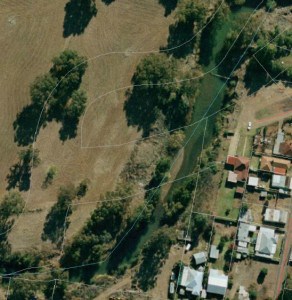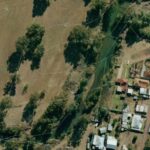Doherty Smith & Associates is now Compass Consulting Surveyors
Click here to see this blog and more on our new website compasscs.com.au
There are several good reasons to have an Identification Survey done when purchasing land, and recently Doherty Smith & Associates have found a few examples of cases where an identification survey would have saved the purchaser a lot of time and money.
An identification survey shows the structures on the subject land in relation to the boundaries. These surveys must be undertaken by a Registered Surveyor. An identification survey will identify the location of any buildings on or adjacent to the land and any fences present.
In particular, an identification survey will find any encroachments by the buildings or fences on the land standing on or overhanging the adjoining land, or encroachments by adjoining buildings standing on or overhanging the subject land. Any easements on the land will be identified and the survey report will comment on whether the subject land complies with any conditions of easements.
Identification surveys can be required in several circumstances:
- When purchasing land, in order to identify the subject land and detect any problems prior to purchase. The identification survey can be used by Council to check for any unapproved extensions or additions to buildings.
- When re-fencing land, in order to ensure that any new fences are placed in the correct location. Boundaries may have to be marked in order to ensure accurate construction.
- Boundary disputes between neighbours, survey is required to determine accurate location of dividing boundary.
- When refinancing land with a financial institution, a current identification survey can be required.
- When planning changes or additions to structures on land such as extending a building or adding a new building, Council may require an identification survey in order to ensure that the new construction does not encroach upon adjoining land.
All too often, surveyors encounter problems with encroachments or structures which are not approved by Council. At best, these problems can be resolved with time and money At worst, these situations can become protracted and expensive legal battles.
Doherty Smith & Associates estimate that 1 in 10 identification surveys reveals a problem which needs addressing. These range from fencing being more than one metre out of position, to dwellings, sheds, water tanks, bores and other structures standing substantially upon adjoining land.
When purchasing a property, it is strongly recommended that an identification survey be prepared. The expense of an identification survey generally averages at about 0.25% of the purchase price of a property.
Lately, some conveyancers have suggested using Title Insurance as an alternative to have an identification survey prepared. This insurance is generally slightly cheaper than an identification survey, however does not guarantee a satisfactory outcome in the event of a problem detected subsequent to purchase.
So why do you need one?
There is nothing like a practical example to get you thinking, so consider these cases.
Case 1 – The purchaser of a house gets a survey done as part of their purchase. The survey reveals that a substantial encroachment exists by the adjoining land upon the subject land – about 3 metres. Part of the land being purchased has been enclosed with the adjoining yard, with structures including a shed, bore with pump, water tank and gardens standing upon it.
Negotiations begin between the purchaser and the adjoining owner. The adjoining owner wants to retain the land, which will require a boundary adjustment (subdivision) and purchasing this land. The purchaser also wants the land, which is legally part of his block. The purchaser sets a relatively high price for the purchase of the disputed land. The adjoining owner does not want to pay the price.
The situation now turns tense, with solicitors being involved. This case is as yet unresolved.
Case 2 – Land is purchased without an identification survey being performed. Subsequent activity on the land draws the attention of the local Council, who contact the land owner in regard to the use of the land. In their investigations, the Council find that a substantial building on the land had been built without Council approval by the previous owner. The current owner is ordered by Council to obtain retrospective approval for this building, requiring an identification survey, as well as floor plans of the building. The building will also have to meet current requirements for construction. Failure to meet Council’s requirements will result in the building being condemned.

Case 3 – Land adjoining a river is purchased without an identification survey being performed. After settlement, the new owner finds the dimensions of the land smaller than expected and requests an identification survey. The identification survey reveals that a river which bounds the land has changed course substantially, almost cutting the land in half. Because the change to the course of the river was caused in major flood events and not by the process of slow and imperceptible erosion and accretion, the boundaries of the land remain at the old location.
The owner is now left with a large portion of his land which is occupied by the river and is un-useable.
In each case, serious problems have been detected by an identification survey. These three examples are only a sample of the potential problems associated with land purchases. Purchasers of land must investigate the land they are hoping to purchase, and be aware of the implications of any problems.
Buyer Beware!
Eric Smith
Registered Surveyor



